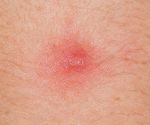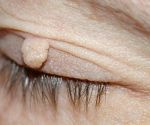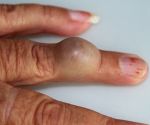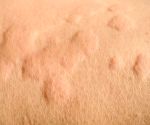Advertisement
In the examining room, you will be asked to take all your clothes off and put on a gown that is open in the front. (There's no need to feel embarrassed; we doctors are used to doing this every day. But if you feel uncomfortable in any way, ask to have a nurse or doctor's assistant in the room during the exam. And if you feel nervous about baring it all, you may decline -- although this defeats the purpose of a total body skin check.) You should take off your socks, your underwear, any hair bands, and your jewelry. Expect the dermatologist to look at your skin everywhere, starting at your head. Doctor will look through the scalp, behind and in the ears, on the face. He/she will look under eyebrow hairs, on the eyelids, into the eyes and nose, and inside the mouth. He/she will check the lymph nodes, scan the underarms, and look at the hands, between the fingers, on the nails. He/she will go down the front of the body, including the groin area, down to the feet, in between the toes, to the nails and the soles of the feet. Then he/she will take a look at the back side of the body. He/she will lightly touch the skin the entire time doing a skin check feeling for little bumps or lumps along the way. Some doctors may have a patient lie down during the examination, but more often you will be standing up. The doctor may use a special magnifying glass or a Wood's lamp (or black light) to better observe a certain area or spot. Some dermatologists are faster and some are slower with their skin checks, but what is important is the thoroughness of the exam. Dermatologists are trained to detect a suspicious lesion, and at some point, they have a sixth sense of what's bad and what's normal. The problem is that a lot of skin cancers mimic benign-looking things such as freckles, scars, or skin tags. That puts some of the responsibility on you to look at your own skin from head to toe and be aware of any changes. Ask your doctor to show you how to do a skin self-exam.
Simple Skin Beauty: Every Woman's Guide to a Lifetime of Healthy, Gorgeous Skin
Simple Skin Beauty: Every Woman's Guide to a Lifetime of Healthy, Gorgeous Skin
Continue Learning about Skin Disorders
Important: This content reflects information from various individuals and organizations and may offer alternative or opposing points of view. It should not be used for medical advice, diagnosis or treatment. As always, you should consult with your healthcare provider about your specific health needs.







